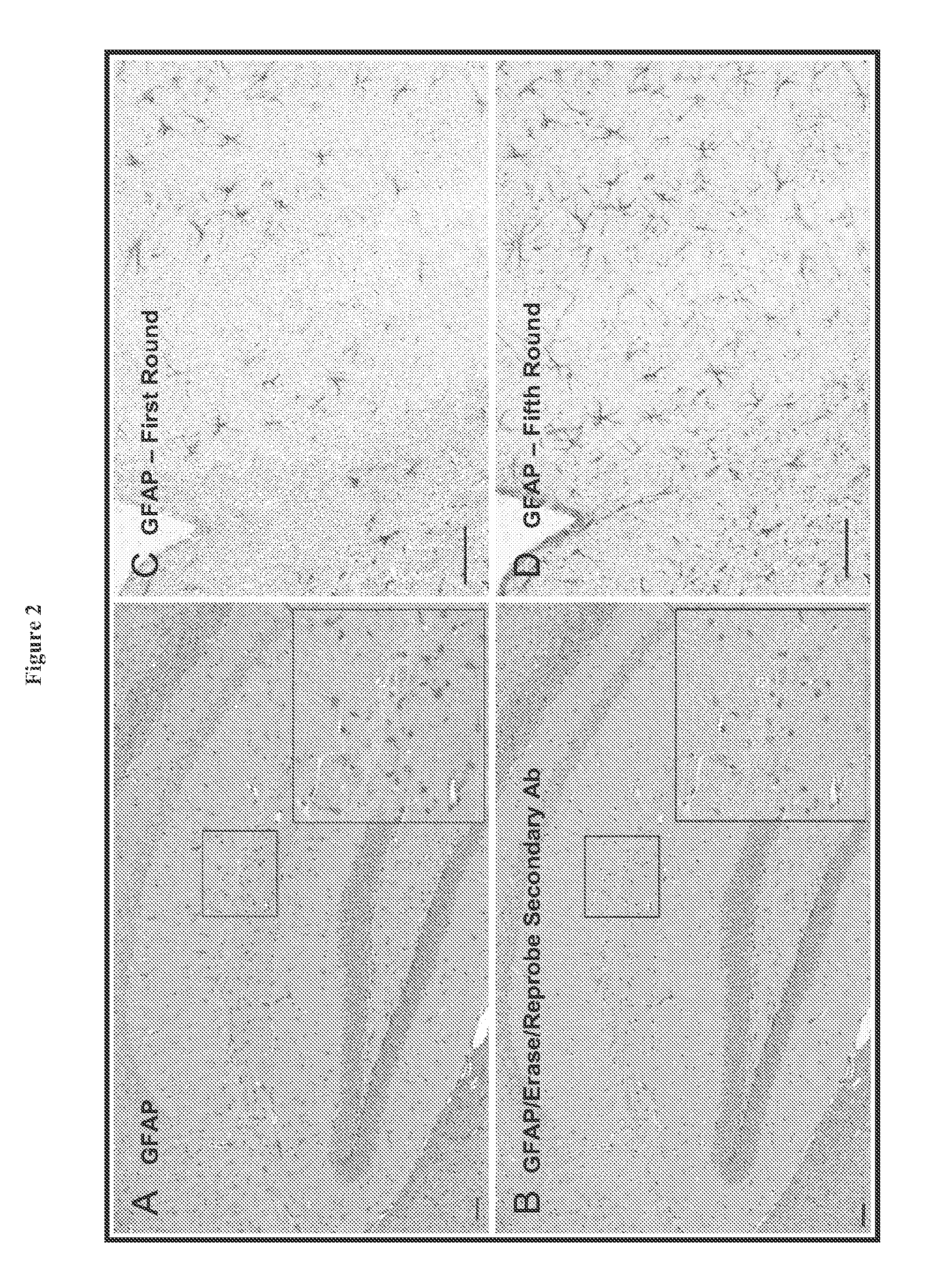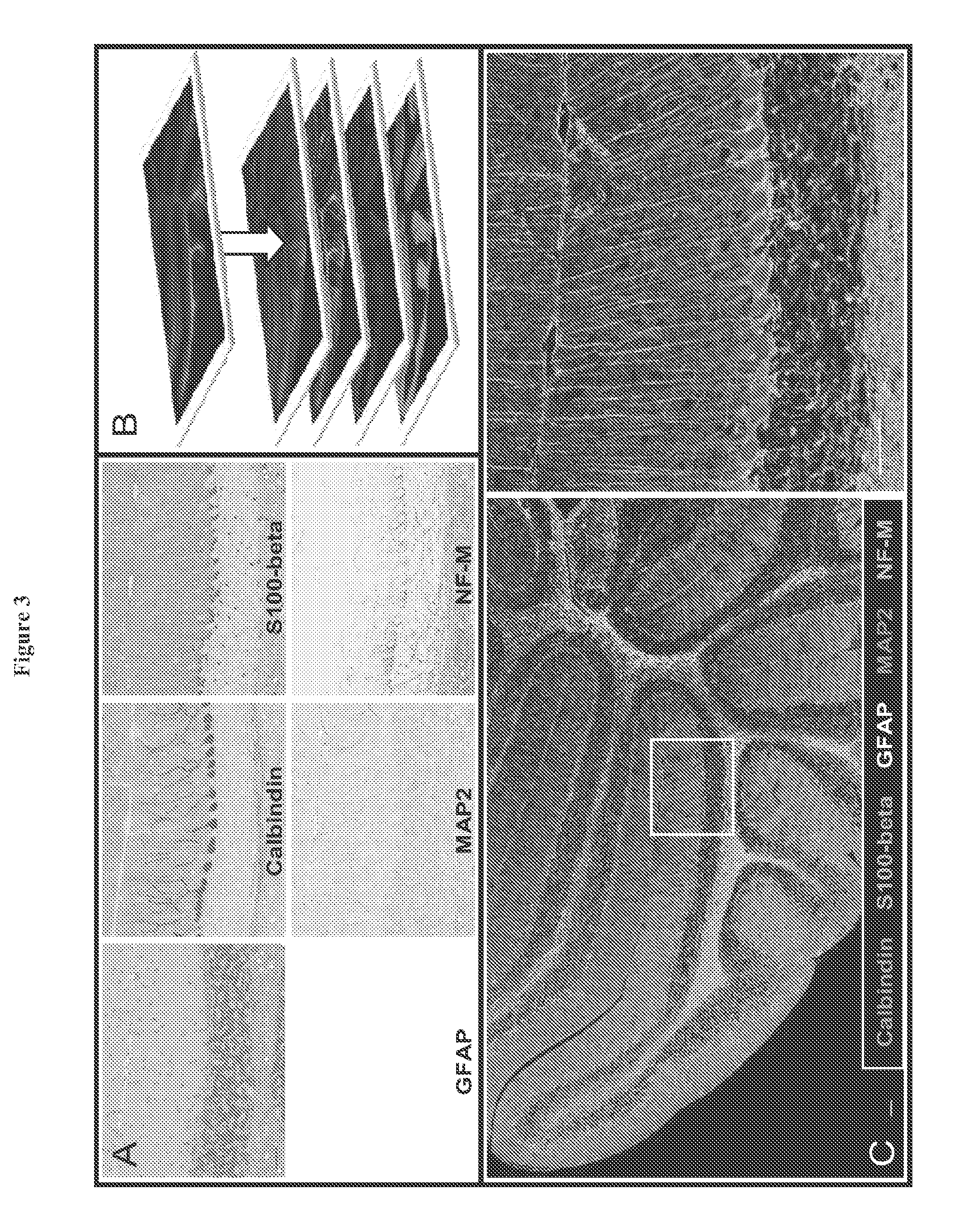Serial multiple antigen colocalization in paraffin-embedded tissue
a paraffin-embedded tissue and antigen colocalization technology, applied in the field of paraffin-embedded tissue antigen colocalization, can solve the problems of limited, negative effects, and limitations of current colocalization methods, and achieve the effect of less tissue damag
- Summary
- Abstract
- Description
- Claims
- Application Information
AI Technical Summary
Benefits of technology
Problems solved by technology
Method used
Image
Examples
embodiments
[0129]The ability to simultaneously visualize expression of multiple antigens in cells and tissues can provide powerful insights into cellular and organismal biology. However, standard methods are limited to the use of just two or three simultaneous probes and have not been widely adopted for routine use in paraffin-embedded tissue.
[0130]The present invention allows for analyzing multiple targets in a reasonable amount of time, but because there is a wide range in the timing of antibody incubations and washes, the number of antigens being targeted, etc., the amount of total time required for the whole process can vary. The present invention usually requires about 1-2 hours per round, resulting in 5-10 hours for a 5 antigen experiment. There is also a range of time for scanning each stain, depending on speed of scanner, etc.
[0131]The present invention as described below, wherein a large area is scanned on the exemplified tissue sample on a slide, can be adapted to allow multiples of ...
examples
[0184]In order to overcome the limitations described in the Background, described herein is a novel approach called Sequential IMmunoPeroxidase Labeling and Erasing (SIMPLE) that enables the simultaneous visualization of multiple markers within a single tissue section. By combining the use of an alcohol-soluble immunoperoxidase substrate, 3-amino-9-ethylcarbazole (AEC), with a previously described antibody-antigen dissociation method (6), we have performed up to five serial rounds of staining on a single tissue section without loss of tissue antigenicity. This method is accessible to any histology lab and requires no specialized equipment. The use of a whole slide digital scanning microscope greatly increases the power of SIMPLE as it facilitates permanent archiving of each round of labeling. In addition, from a practical standpoint, the method enables multiple immunohistochemical analyses to be performed on otherwise limited tissue samples, such as very small biopsies and tissue mi...
PUM
| Property | Measurement | Unit |
|---|---|---|
| pH | aaaaa | aaaaa |
| pH | aaaaa | aaaaa |
| soluble | aaaaa | aaaaa |
Abstract
Description
Claims
Application Information
 Login to View More
Login to View More - R&D
- Intellectual Property
- Life Sciences
- Materials
- Tech Scout
- Unparalleled Data Quality
- Higher Quality Content
- 60% Fewer Hallucinations
Browse by: Latest US Patents, China's latest patents, Technical Efficacy Thesaurus, Application Domain, Technology Topic, Popular Technical Reports.
© 2025 PatSnap. All rights reserved.Legal|Privacy policy|Modern Slavery Act Transparency Statement|Sitemap|About US| Contact US: help@patsnap.com



